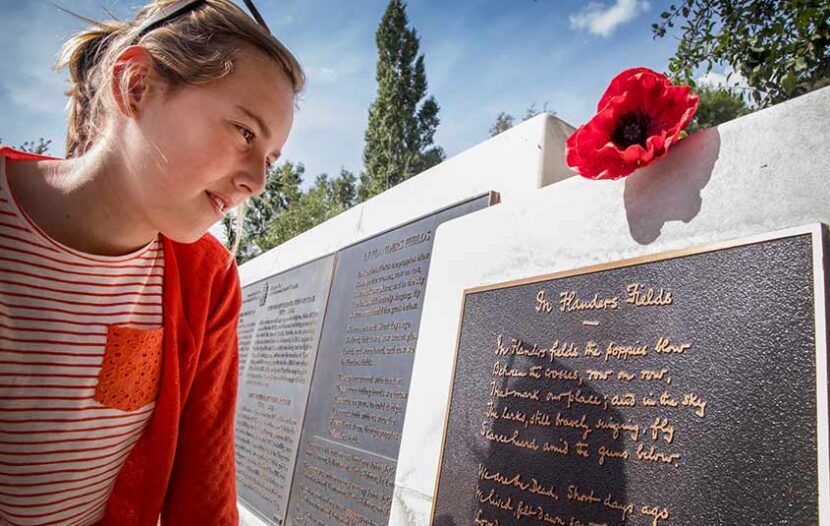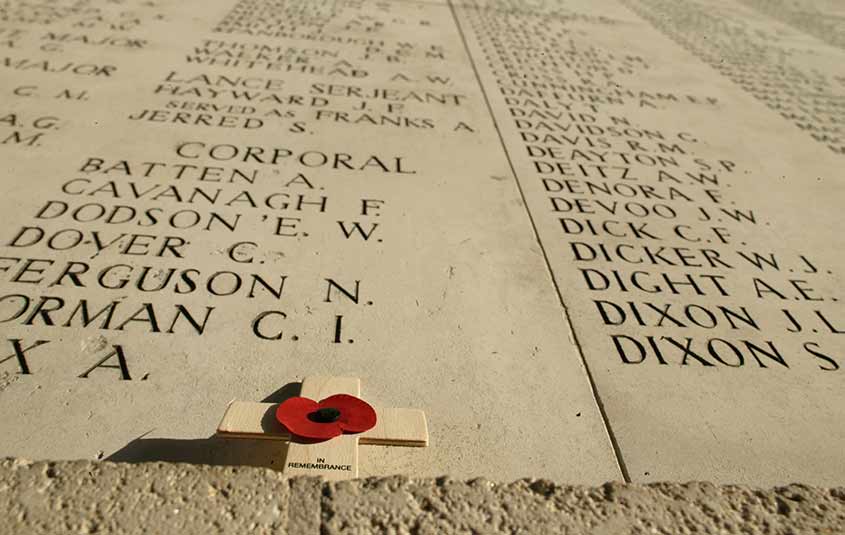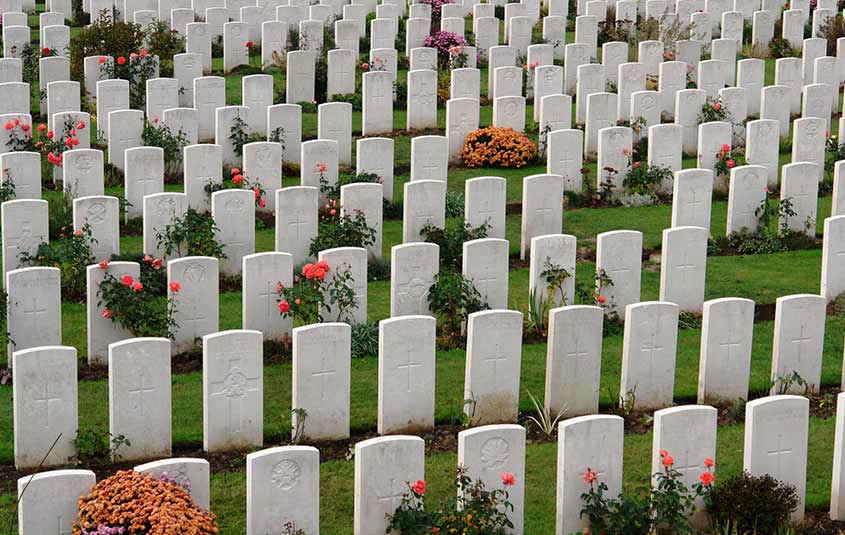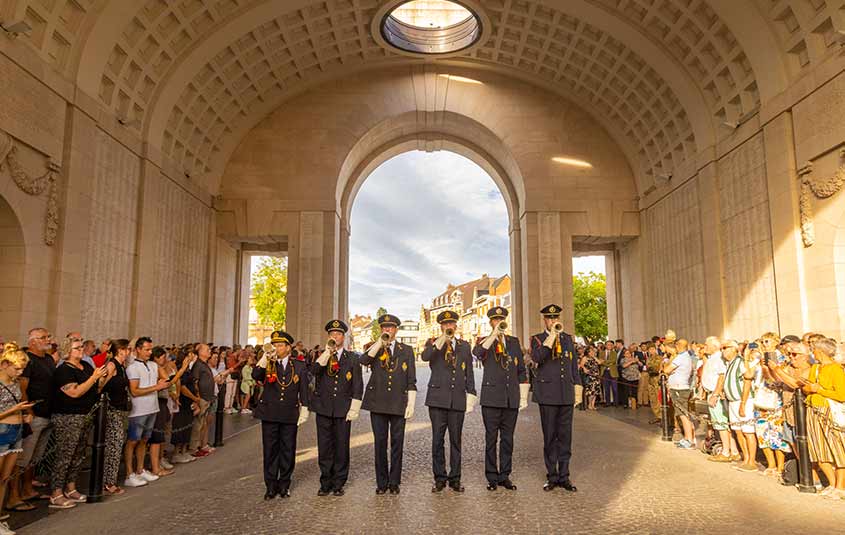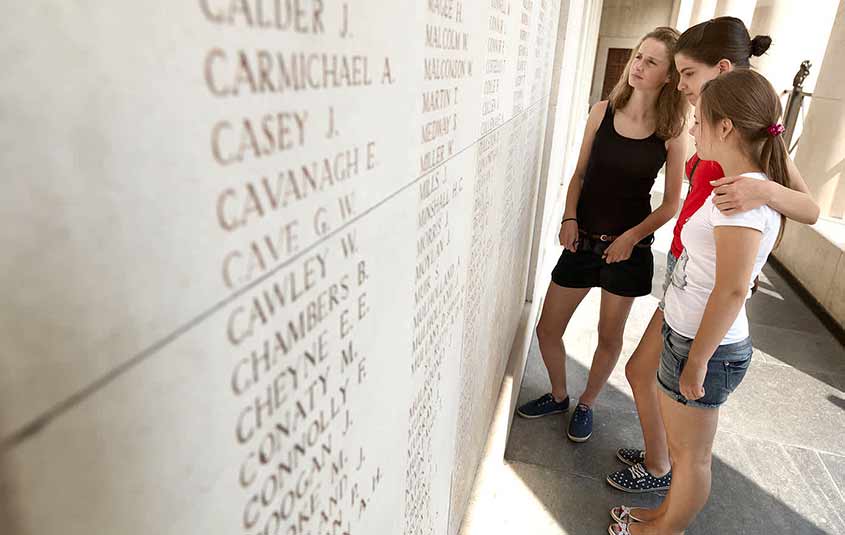The Passchendaele Museum’s ‘Names in the Landscape’ initiative brings new dimension to the stories and histories of Canadian soldiers who fought and served in World War I.
Using the museum’s new online geoportal, users can trace the location of more than 1,400 Canadians who were killed or presumably buried in Flanders Fields.
By adding personal and military data, the museum aims to preserve and unlock these soldiers’ stories. The project has the support of the Flemish Government, and Library and Archives Canada.
- The Last Post Graved Names © Wouter Rawoens
- Tyne Cot Cemetery © Westtoer
Everyone can contribute by sharing information on the portal. The 1,400 is a sizeable fraction of the 6,928 missing Canadians whose names are engraved on Belgium’s Menin Gate, the memorial to the more than 54,000 Commonwealth soldiers who died in unknown graves in the Ypres Salient in World War I.
With the help of volunteers of the Genootschap Passchendaele Society 1917, the museum digitized and inventoried the details of more than 1,400 Canadians through the online sources of Library and Archives Canada.
The result is the online geoportal. Visitors to the site can add information, stories, anecdotes or photographs of a soldier and contribute to an online platform via www.passchendaele.be.
The Passchendaele Museum notes that it is not just calling for information to be shared online. For years, the museum has prided itself on sending its visitors out into the countryside via various hiking and cycling routes.
For ‘Names in the Landscape’ this can be done via three hiking loops: the 1917 Passchendaele Route (8 km, 7 km or 6 km), the 1916 Zillebeke Route (7.5 km) and the 1915 St. Julien Route (5 km). The loops tell the story of the Canadian men who lost their lives along every road, on every corner. With these walking routes the museum, as an ‘open museum’, says it wants to create a stronger link between the historical facts and the landscape.
- STAD IEPER © Jan D’Hondt Ateljé D 2022
- Ypres – Last Post – Menin Gate
“With ‘Names in the Landscape’ we want to strengthen the role of the landscape as a last witness. The project gives descendants of relatives with no known grave the opportunity to look up the location where the soldier died or was presumably buried. But we also want to encourage local people to approach their neighbourhood in a different way. Residents of our region learn where a missing Canadian soldier died or was buried. If you know that it is under someone’s house or a football field, this project offers a new and very tangible look at what happened during the First World War in our region,” says Joachim Jonckheere, Chairman of the Passchendaele Museum.
Jan Jambon, Flemish Minister for Culture, adds: “The Passchendaele Museum manages and opens up an extensive collection of objects, personal stories and documents from the First World War for a national and international audience. With this participatory geoportal, a virtual exhibition, recreational walking routes and a publication, the Passchendaele Museum is now putting a face on the personal stories behind the names in cemeteries and monuments in the immediate vicinity of the museum.”
And the Ambassador of Canada to Belgium and Luxembourg, H.E. Mr. Alain Gendron, says: “It is with wonder and admiration that I witness the sense of duty of the Belgians in organizing these events, where young and old gather together to fulfill the Duty of Remembrance. The Duty of Remembrance is also at the core of the Names in the Landscape project. With its digital portal, the project teleports, as it was, the past into the present and the future. The digital also reduces the physical distance between Canada and Belgium.
“Canadian people will be able to visit Flanders’ fields and pay their respect to their courageous ancestors as often as they wish without having to cross the ocean. They will not only visit and witness the places where their ancestors have fought; they will also interact with the past, contribute to our collective memory, and connect with the people living here. This project will bring people in Canada and Flanders closer to each other,” he added.
